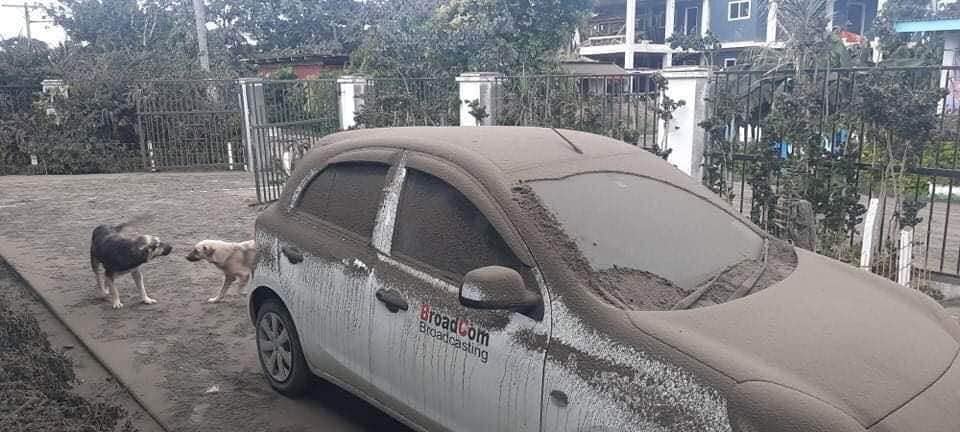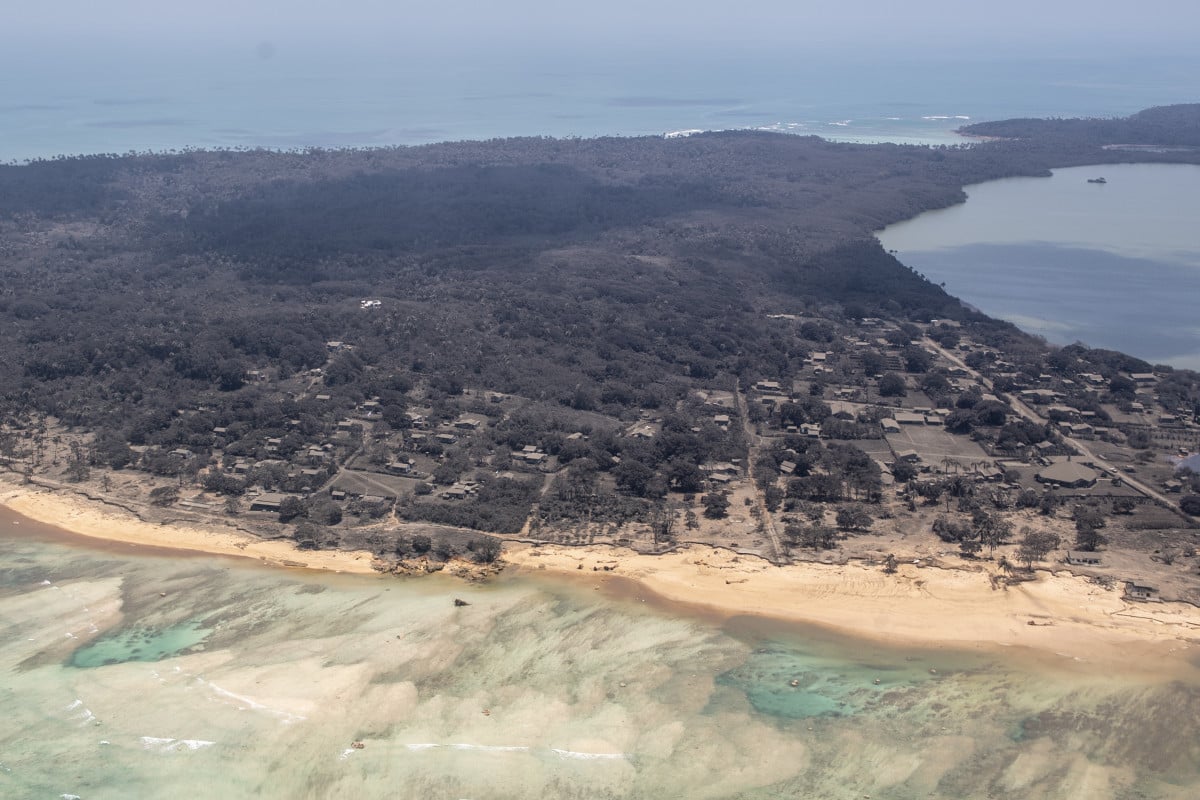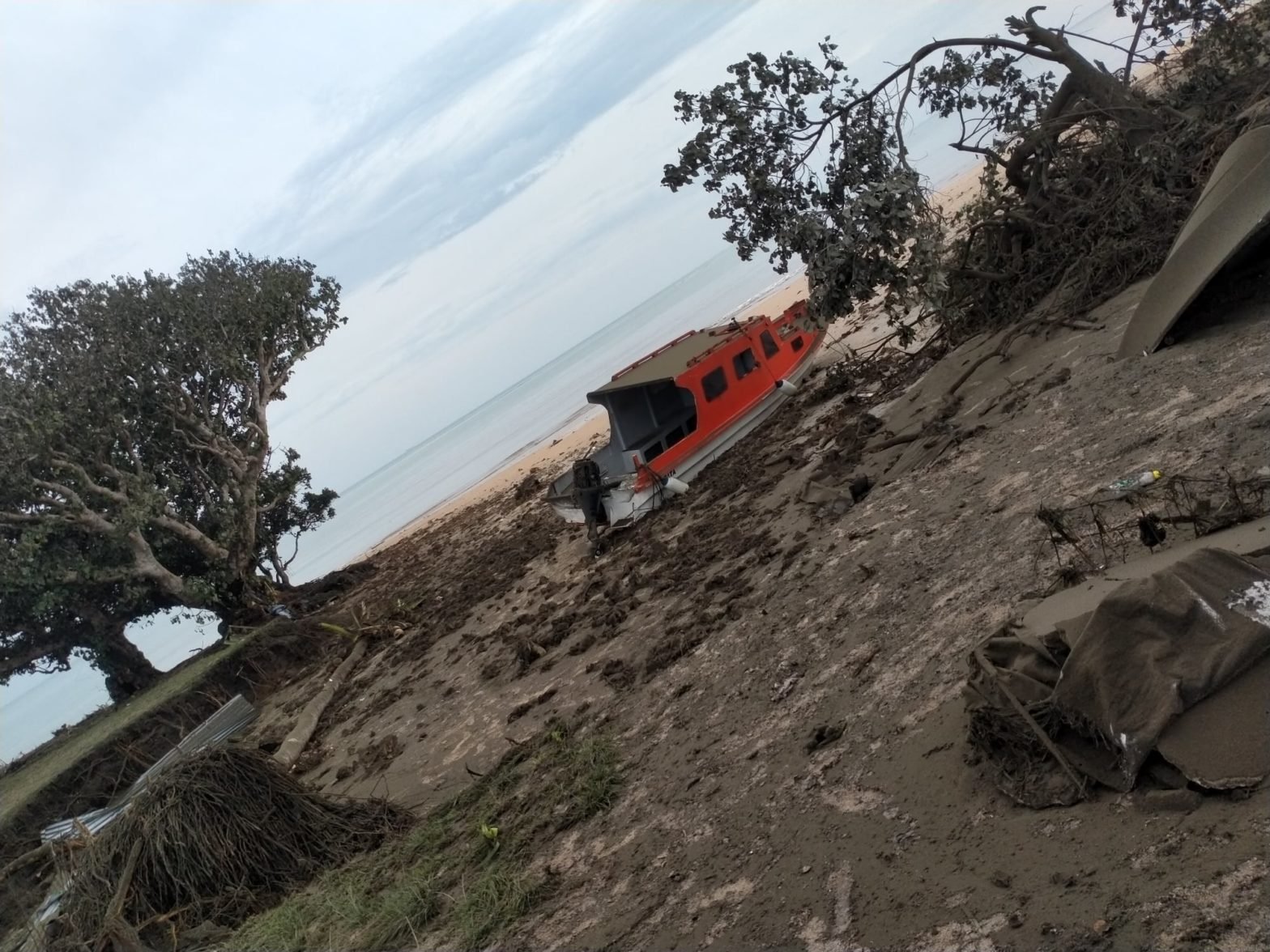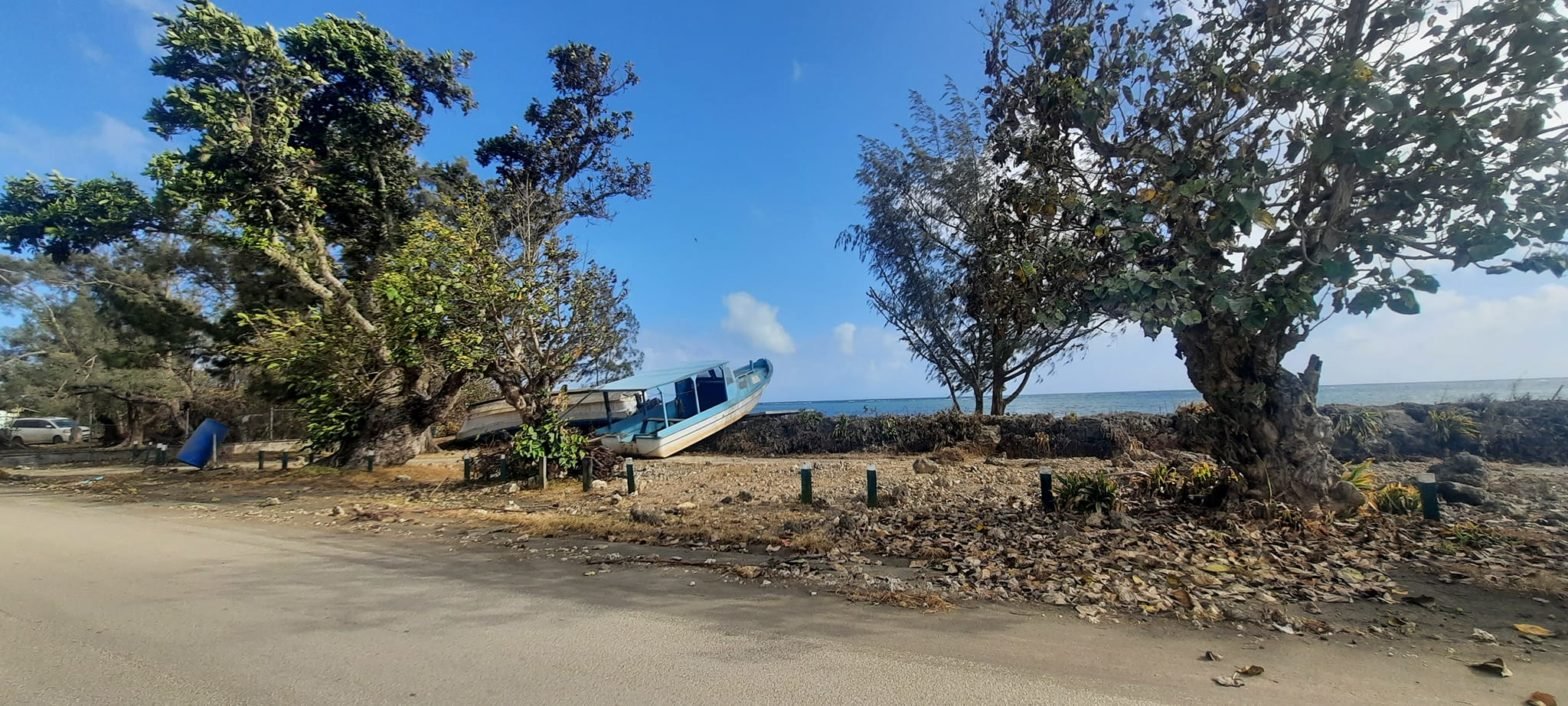Experts say ashfall from the volcanic eruption will be affecting Tonga’s public health and food crops. They say cleaning ash was necessary to reduce health risks
Ashfall from Saturday’s volcanic eruption near Tonga will be affecting residents’ health, and is likely to have contaminated freshwater supplies and damaged crops, New Zealand experts say.
Photographs taken during a New Zealand Air Force surveillance flight over Tonga on Monday showed a layer of ash covering houses, roads, runways and ports.
University of Canterbury professor Tom Wilson, who specialises in the impacts of volcanic hazards on critical infrastructure, agriculture and wider society, said there had been reports from Tonga that the ashfall thickness was about 20 millimetres on the main island of Tongatapu.
He said photos from the New Zealand Air Force flight looked consistent with those reports but said there would be variable ashfall thickness across Tongatapu and Tonga’s other islands.
“It’s beyond nuisance, that’s for sure, but probably not necessarily catastrophic for communities that are exposed to that amount of ashfall.”
He said he was speaking more generally, considering details out of Tonga were limited.
Ashfall 20mm thick may cause non-structural damage to buildings, such as gutters falling off houses, he said. Over the medium to long-term there may also be increased corrosion if the ash was acidic, he said.
“I’m really just speculating here because we don’t know exactly what that ash type is and what those circumstances on the ground are.”
There was also likely to be different types, sizes and chemical make-up of ashfall across Tonga’s islands, he said.
He said the ash would not be “one big homogenous blanket”.
“You’re going to have potentially quite big differences in terms of the thicknesses, the grain size and even the chemistry of that ash.”
Coarser ash may be easier to clean up because it was not as dense and therefore, lighter, he said.
It was also less likely to adhere to objects because it did not bind as well as finer ash, he said.
But it could cause greater damage on impact, he said.
Ashfall clean up would be the main issue facing parts of Tonga not affected by the tsunami, he said.
Ashfall on Tonga was expected to have contaminated water supplies, especially tanks that collected rain water from a roof, he said.
Cleaning ash from roofs, and getting ash out of homes early on was necessary to reduce health risks caused by ash, he said.
Cleaning ash from the airport, main roads and ports would be a priority, he said.
The New Zealand Air Force said Fua’amotu International Airport, on the south side of Tongatapu, was assessed to have limited damage but was unserviceable due to a layer of ash covering the runway, taxiways, and aprons.
Operations were underway to clear the ash by shovel and wheelbarrow and no heavy excavation machinery was observed, it said.
Wilson said overseas experience showed heavy machinery would be useful for clearing runways and roads with about 20mm of ashfall.
He said 20mm may sound like a small amount of ash but when you take into account the runway and roads, it added up.
“You can end up having thousands if not tens of thousands of cubic metres of ash to have to manoeuvre around.”
Clean up, transportation, and the disposal of ash in a location where it would not become a future hazard were important to consider, he said.
“It will be awfully difficult thinking about all of that with the context of the tsunami impacts.”
Another top concern would be crop contamination and damage, he said.
“That’s important from a food security perspective.”
There have already been reports of Tonga’s vanilla crops having suffered damage from ashfall.
Whether crops could be salvaged would depend on the type of ash that fell, and the type of plant it fell on, he said.
Broadleaf plants for example would collect more ash. Finer ash particles may become sticky and be harder to clean off, he said.
In the medium-term farmers would be looking to work ashfall into the soil, which may end up enhancing the condition of the soil, he said.
With the right rainfall there may be a relatively rapid recovery of some crops, he said.
However, farmers of some crops, such as those that were in their pollination phase, may be more affected, he said.
University of Otago health sciences Pacific associate dean Xaviour Walker said prior studies showed those most at risk from ashfall were people with asthma, pre-existing lung conditions, or underlying heart conditions.
Tonga residents should wear a mask, stay indoors, reduce exposure to the ash and wear eye protection, he said.
Those cleaning up the ashfall should be provided adequate personal protection equipment, so they did not get secondary exposure, he said.
Respiratory problems caused by the ashfall would probably be the main reason for hospital admissions in the aftermath of the disaster, he said.
There also needed to be an awareness and focus on the psychological effects of the disaster, he said.
This all needed to happen under a health system dealing with regular operations, as well as being prepared for a Covid-19 outbreak, he said.
He said there was not a lot of data about the long-term health impact of ash exposure.
The type of ash generated from the eruption would contain sulphur dioxide, he said.
One concern was that it could turn to sulphuric acid in the atmosphere and make acid rain, affecting crops and water supplies, he said.
An immediate concern was ensuring access to clean drinking water, he said.
Tongan residents should avoid drinking contaminated water or washing vegetables with water that may be contaminated, he said.
Support personnel from the New Zealand Defence Force and other services would be needed to aid in the ashfall clean-up, he said.
On Tuesday, Royal New Zealand Navy offshore patrol vessel Wellington and supply ship Aotearoa departed for Tonga and are expected to arrive on Friday.
Aotearoa has bulk water supplies on board and both ships are carrying humanitarian aid and disaster relief supplies.
“Water is among the highest priorities for Tonga at this stage and HMNZS Aotearoa can carry 250,000 litres, and produce 70,000 litres per day through a desalination plant,” New Zealand Defence Minister Peeni Henare said.
GNS has a page on its website dedicated to how to respond to volcanic ashfall.
It says volcanic ash is hard, highly abrasive, mildly corrosive and conductive when wet.
Prompt clean-up of ashfall in urban areas is essential to minimise damage and disruption, it says.
Ashfall of only a few millimetres deep will generate large volumes of ash for collection and disposal, it says.
Ashfall 2mm to 30mm thick causes significant traffic hazards, collapsed and blocked gutters, blocked storm drains and risk of severe damage to wastewater treatment plants if ash enters sewer lines.
All roads and paved areas on public and private properties will require cleaning and private properties will require assistance with clean-up, it says.
The Cleanup should wait until the ash has stopped falling where possible, it says.
A coordinated clean-up is needed where priority areas such as arterial routes and key facilities are identified, it says.
A coordinated clean-up of neighbourhoods will optimise resources and reduce recontamination of cleaned sections, it says.
This story was produced by John Anthony, originally published at Stuff NZ on 20 January 2022, reposted via PACNEWS.




